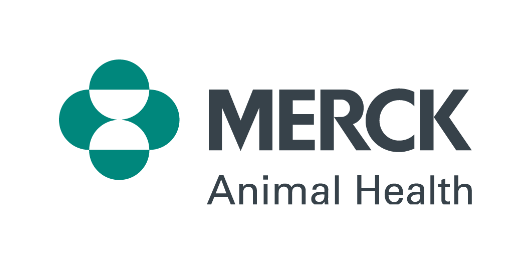Merck Animal Health Launches First Transdermal Non-Steroidal Anti-inflammatory Drug for Cattle
FINADYNE® Transdermal Pour-on Solution Offers Novel Application
SUMMIT, NJ , October 16, 2014 – Merck Animal Health today introduced FINADYNE® Transdermal (flunixin meglumine) Pour-on solution which delivers consistent efficacy proven to reduce pyrexia (fever) associated with bovine respiratory disease (BRD). FINADYNE Transdermal Pour-on combines convenience with a novel delivery method that simplifies administration for veterinarians and farmers alike.
“The launch of FINADYNE Transdermal Pour-on allows for a more convenient way to relieve animals from fever, improve respiratory and depression scores associated with BRD,” states Siddartha Torres, Merck Animal Health. “FINADYNE Transdermal Pour-on is the world’s first non-parasiticide cattle product available with a transdermal route of administration and builds on the legacy of FINADYNE as the pioneer injectable non-steroidal anti-inflammatory drug.”
FINADYNE Transdermal Pour-on goes to work quickly and has been demonstrated to reduce fever as early as four hours after administration. The innovative technology of FINADYNE Transdermal Pour-on allows for rapid absorption of flunixin through the skin and into the bloodstream. The efficient administration means there is no need for additional labor, head gates or restraint that is commonly associated with injectable administration, which translates to reduced cost per treatment.
Available in pre-calibrated packaging, FINADYNE Transdermal Pour-on makes it easy to ensure the correct dose is given every time. The unique bottle is designed for proper application along the animal’s back and the red-colored solution makes it simple to accurately and quickly measure the dose volume for each animal.
“FINADYNE Transdermal Pour-on will become an important part of health programmes where the reduction of fever associated with BRD is indicated as it makes quick work of treating animals, and supports improved animal well-being,” states Martyn Phillips, Merck Animal Health. “The novel application of FINADYNE Transdermal Pour-on simplifies a usually time-consuming and strenuous process, making it easier for both the animals and the people that care for them”.
This new approach to reducing fever in cattle is in alignment with industry efforts to continuously improve animal care. Transdermal application requires less handling, resulting in less stress on animals and leading to inherent health and wellness advantages. It also offers the added benefit of needle-free administration, with no injection site lesions and a higher-value end product.
About Merck Animal Health
Today’s Merck is a global healthcare leader working to help the world be well. Merck Animal Health, known as MSD Animal Health outside the United States and Canada, is the global animal health business unit of Merck.Through its commitment to the Science of Healthier Animals™, Merck Animal Health offers veterinarians, farmers, pet owners and governments one of the widest range of veterinary pharmaceuticals, vaccines and health management solutions and services. Merck Animal Health is dedicated to preserving and improving the health, well-being and performance of animals. It invests extensively in dynamic and comprehensive R&D resources and a modern, global supply chain. Merck Animal Health is present in more than 50 countries, while its products are available in some 150 markets. For more information, visit www.merck-animal-health.com or connect with us on LinkedIn.
Merck Forward-Looking Statement
This news release includes “forward-looking statements” within the meaning of the safe harbor provisions of the United States Private Securities Litigation Reform Act of 1995.
These statements are based upon the current beliefs and expectations of Merck’s management and are subject to significant risks and uncertainties. If underlying assumptions prove inaccurate or risks or uncertainties materialize, actual results may differ materially from those set forth in the forward-looking statements.
Risks and uncertainties include but are not limited to, general industry conditions and competition; general economic factors, including interest rate and currency exchange rate fluctuations; the impact of pharmaceutical industry regulation and health care legislation in the United States and internationally; global trends toward health care cost containment; technological advances, new products and patents attained by competitors; challenges inherent in new product development, including obtaining regulatory approval; Merck’s ability to accurately predict future market conditions; manufacturing difficulties or delays; financial instability of international economies and sovereign risk; dependence on the effectiveness of Merck’s patents and other protections for innovative products; and the exposure to litigation, including patent litigation, and/or regulatory actions.
Merck undertakes no obligation to publicly update any forward-looking statement, whether as a result of new information, future events or otherwise. Additional factors that could cause results to differ materially from those described in the forward-looking statements can be found in Merck’s 2013 Annual Report on Form 10-K and the company’s other filings with the Securities and Exchange Commission (SEC) available at the SEC’s Internet site (www.sec.gov).
